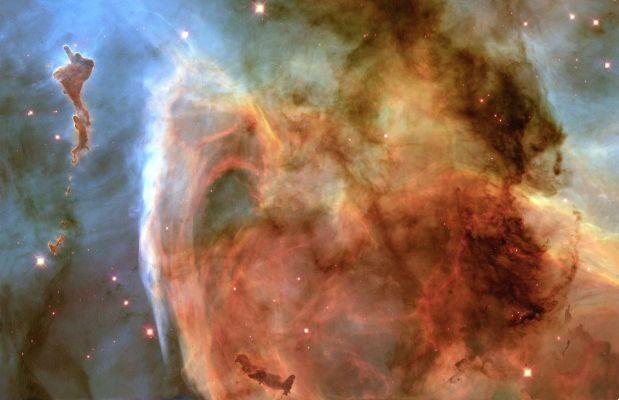“Astronomia Nova” is considered one of the oldest books in astronomy, published in 1609 by the astronomer Johannes Kepler, and consists of the results of his ten years of research on the motions of the planets — in particular, on the visible motion of Mars. This book contains Kepler's first two and most relevant laws, obtained from his studies and mathematical calculations.
The content of the book is extremely thematic and based on the considerations of an astronomer from Denmark named Thycho Brahe. The structure of the work consists of five parts, in which there is an extensive discussion of the planetary models presented so far: the Copernican heliocentric model, the Ptolemaic geocentric model and the intermediate model indicated by Thycho. Also in the book, there is a comprehensive discussion of how the planet Mars can adjust to the Sun, so that it is possible to establish Kepler's first two laws.
book structure
The book's introduction details the four stages that Kleper went through during his period of research on planetary motions. The first consists of a statement that the sun is the great center of the orbits of all the planets. The second step is equivalent to placing the sun as the engine and central space in front of the other planets. The third is based on the claim that the sun is the origin of the source of all planetary motions, explaining this claim with Brahe's proof which is based on the idea that planets do not move in orbits, and the fourth stage it boils down to detailing that the path that the planets take is not a circle, but has an oval aspect.
Kepler points out in the book "Astronomia Nova" that the systems imposed by Thychonic, Copernicus and Ptolemy are confusing, based on his own observations on the subject. According to him, these three models of systems showed similar positions of the planets and were not able to predict how the planets would position themselves in the future. At this point, Kepler emphasizes his well-known diagram that represents the motion of Mars as it relates to Earth.

In the book, the astronomer raises questions about the movements of the planets in relation to the center of their orbit. Kepler believes that the technology's measurements, when based on the position of the sun, open space for a sea of future investigations due to the degree of uncertainty that is obtained from the computation. He exposed the concept that the planets do not move uniformly, but at a speed that changes according to the distance each one is from the sun - a concept that would later become his second law, which was even discovered before the first. .
From the moment Kepler presents the second law in the book, he begins to say that the sun is the source that produces force to the planets. He explains that the planets move from a physical force emitted by the sun that is able to “push” the planets. The astronomer even suggests that there is a second source of force inside each planet, which causes them to be “pulled” towards the sun, in order to keep them spinning in circles in space.
After these thoughts and statements, Kepler demonstrates his search for the real path that the planets take, determined as an ellipse. The first moment he tried to define the trajectory of Mars, he made some mistakes that led him to look for a new system. Kepler ran numerous tests until he discovered a mathematical definition that explained the ellipse as an orbit.

Like the Kepler
The book “Astronomia Nova” is a record of the great discovery of Kepler's first two laws of planetary motion. The third law was discovered a few years after the book was published. Are they:
Kepler's 1st Law – Law of Orbits
In this law, Kepler declares that the orbit of all planets revolving around the sun is elliptical, not circular. Furthermore, he states that the Sun occupies the foci of the ellipse.
Kepler's 2nd Law — Law of Areas
The second law states that the imaginary wire that brings the Sun closer to the planets revolving around it sweeps across the areas at the same speed and in constant time.
Kepler's 3rd Law — Law of Periods (or Harmony)
In this law, Kepler declares that the square of the period of a planet's orbit is fully proportional to the cube of its own average distance from the sun. Furthermore, the ratio between these two pieces of information is of equal magnitude for all planets that revolve around the sun.
With the book “Astronomia Nova” and Kepler's Methodologies, we can understand the exact moment when the laws and discoveries of planetary movements arrived in the world. Kepler and his astronomical practice based on mathematical and physical hypotheses, using extremely rigorous procedures, discovered and initiated the study of the movements of the planets.

You may also like
- Understand what planets mean within astrology
- Delve into astronomy and discover our universe
- Impress yourself with the true meaning of astrology!
In this book, the astronomer modified the methodology of what was understood in certain hypotheses of XNUMXth century astronomy, and made it possible to change from mathematical and descriptive astronomy to the well-known physico-mathematical, explanatory astronomy.
























